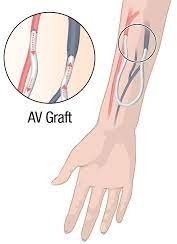During surgery, the nurse makes the following observations about the patient:
- Pulse rises from 68 beats per minute to 110 beats per minute.
- Temperature increases from 36.5 C to 38.50
- Muscles appear rigid.
The circulating nurse anticipates preparation of:
Naloxone (Narcan)
Dantrolene (Dentrum)
Furosemide (Lasix)
Flumazenil (Romazicon)
Flumazenil (Romazicon)
The Correct Answer is B
The given observations suggest the occurrence of malignant hyperthermia (MH), a potentially life-threatening reaction to certain medications used during anesthesia. MH is characterized by an increase in heart rate (tachycardia), elevated body temperature (hyperthermia), and muscle rigidity. The primary treatment for MH is the administration of dantrolene, which is a skeletal muscle relaxant that helps to counteract the effects of the reaction.
Naloxone (Narcan) is an opioid receptor antagonist used to reverse the effects of opioid overdose or excessive opioid sedation.
Furosemide (Lasix) is a diuretic used to treat conditions such as edema and high blood pressure.
Flumazenil (Romazicon) is a benzodiazepine receptor antagonist used to reverse the effects of benzodiazepine overdose or excessive sedation.
Nursing Test Bank
Naxlex Comprehensive Predictor Exams
Related Questions
Correct Answer is ["1.4"]
Explanation
We know that 7,000 units is equivalent to 5,000 units per ml. So, we can set up the proportion:
7,000 units / 5,000 units per ml = x ml / 1 ml x = 7,000 / 5,000
x = 1.4
Therefore, the nurse should administer 1.4 milliliters (ml) of heparin.
Correct Answer is D
Explanation
Pain and coldness in the fingers following AVG placement can indicate impaired blood flow or compromised circulation to the hand. This may be due to complications such as thrombosis (clot formation), graft malfunction, or decreased arterial perfusion. These symptoms should be taken seriously and promptly communicated to the healthcare provider.
The healthcare provider needs to evaluate the patient's symptoms, assess the AVG, and determine the appropriate course of action. Prompt intervention can help prevent further complications and ensure adequate blood flow to the fingers.

Whether you are a student looking to ace your exams or a practicing nurse seeking to enhance your expertise , our nursing education contents will empower you with the confidence and competence to make a difference in the lives of patients and become a respected leader in the healthcare field.
Visit Naxlex, invest in your future and unlock endless possibilities with our unparalleled nursing education contents today
Report Wrong Answer on the Current Question
Do you disagree with the answer? If yes, what is your expected answer? Explain.
Kindly be descriptive with the issue you are facing.
